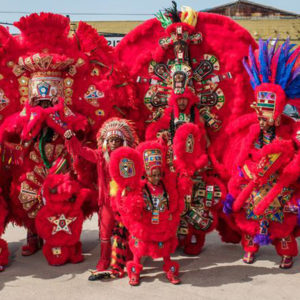October 2020 – May 2021
Mardi Gras = Fat Tuesday
A brief history of Mardi Gras…
133-31 B.C.
Some think Mardi Gras may be linked[2] with the ancient Roman pagan celebrations of spring and fertility such as Saturnalia, which dates back to 133–31 B.C. This celebration honored the god of agriculture, Saturn. It was observed in mid-December, before the sowing of winter crops. It was a week-long festival when work and business came to a halt. Schools and courts of law closed, and the normal social patterns were suspended.
On the Julian calendar, which the Romans used at the time, the winter solstice fell on December 25. Hence, the celebration gradually became associated with Christmas.
4 B.C. Onward
The festival is more commonly associated with Christian tradition. In the Gospel of Matthew the biblical Magi (also called the ‘Three Wise Men’ or ‘Three Kings’) visited Jesus with gifts containing gold, frankincense, and myrrh. So on the twelfth day of Christmas, Christians celebrate the feast of Epiphany, a celebration of Jesus coming for more than just the Jews, as even Gentile magi were allowed to see him. This begins the Carnival celebration which continues until the day before Ash Wednesday. The culmination of this celebration overlapped with the beginning of Lent. Early Christians believed that during the Lenten season (the forty days between Ash Wednesday and Easter, not including Sundays), Christians should deprive themselves of anything (especially foods) that brought joy so that they might understand better the trials that Jesus faced leading up to his death on Good Friday. Thus, on the Tuesday before Lent and the last day of Epiphany, Christians would celebrate with a feast of their favorite foods to tide them over the coming weeks.
These feasts, which first were only meant for Christians, were expanded so that Christians would celebrate with their neighbors and friends. Slowly, feasts like Shrove Tuesday became public celebrations and adapted many names and traditions as they spread.
Source: wikipedia.com
What is the Beltane Festival and how is it connected to May Day?
The Beltane festival is a living, dynamic reinterpretation and modernisation of an ancient Iron Age Celtic ritual and is the largest of its kind. Having been resurrected as a practice in 1988 it has become a central focus for our community, bringing many many people together to acknowledge and revel in the birth of the Summer and the fertility of the land. It is important to note that the purpose of our festival is not to recreate ancient practices but to continue in the spirit of our ancient forebears and create our own connection to the cycles of nature.
For more details, visit here: https://beltane.org/about/about-beltane/

 Our Village Montessori
Our Village Montessori About Montessori
About Montessori Calendar
Calendar Blog
Blog Admissions
Admissions Contact
Contact Agenda
Agenda
 Posterboard
Posterboard  Month
Month  Week
Week  Day
Day 



501.944.4483